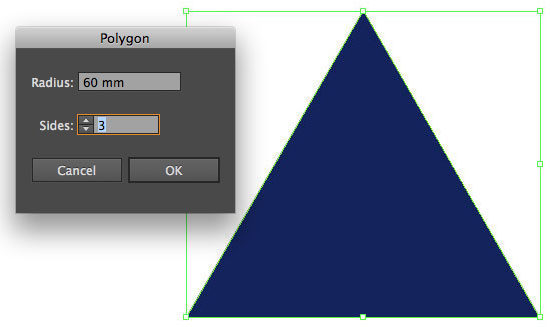

More after the jump! Continue reading below↓įree and Premium members see fewer ads! Sign up and log-in today. Spacing can dramatically alter the look of a pattern, so explore with different spacings.

Then, select the evenly spaced row you’ve created, group the items, and copy it the group until you have enough copies to distribute evenly.
HOW TO MAKE A TRIANGLE IN ILLUSTRATOR FULL
And, for full editing of the blended shapes, go to Object > Blend > Expand.Īnother way is simply to create many copies of your object, highlight all of them, open the Align panel, and set Distribute Spacing to your desired value for a horizontal distribution. Open the Align panel and set values for Vertical Distribute Spacing to help align the rows evenly. Then, duplicate the rows as many times as you wish. To change the number of steps, go to Object > Blend > Blend Options, and specify a different number of steps. Then, selecting both, go to Object > Blend > Make, which will create a line of objects based on the previous settings in Blend Options. Make two horizontally aligned copies of the shape you wish to turn into a pattern. Because Illustrator’s Blend Tool lets you specify numerically how many steps of objects you want on a line, by designing these patterns with the Blend Tool, it’s easy to change the number of items in a row or column. Technique #1: SpacingĪ grid of objects distributed evenly is perhaps the most common type of pattern. This tutorial covers the basics of designing patterns in Illustrator, and shows advanced applications for inspiration. With just a few clicks in Adobe Illustrator, you can make dazzling custom patterns. Patterns can add branding, texture, tone, style, and even greater meaning to a design.


 0 kommentar(er)
0 kommentar(er)
